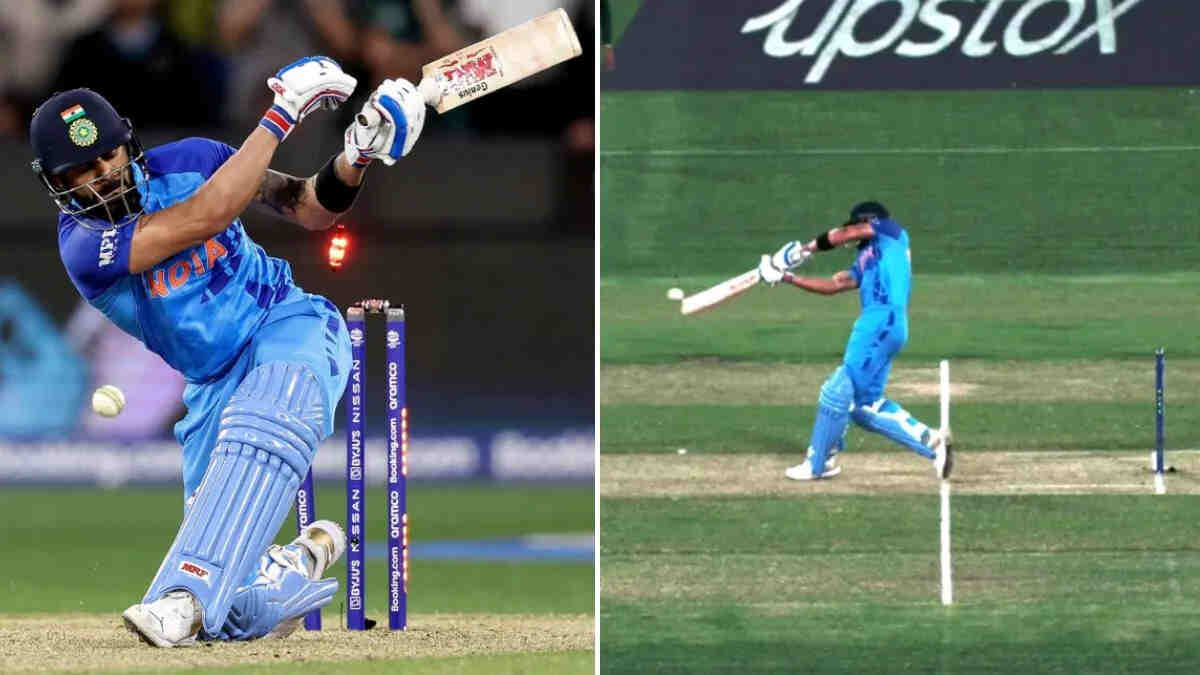Free hit rule explained: The rule that put the Indian team on the threshold of victory: Yesterday’s match ‘India vs Pakistan’, the stage of World Cup 2022, Historic Ground MCG, India’s first match of this World Cup. The last 8 balls that are never to be forgotten, whose sight is not taking off from the eyes. India beat Pakistan by 4 wickets in a fascinating, nail-biting, and super thrilling match. Those shots and scenes of Virat Kohli, who led the journey from 28 runs in 8 balls to 1 in 1 were truly mesmerizing.
Two consecutive sixes off Haris Rauf in 18.5 and 18.6 by Virat Kohli set the tone and India had to score 16 runs in the last 6 balls. Babar gave the ball to Nawaz for the last over and Hardik Pandya’s wicket falls on the first ball, which takes India’s hope a little away from victory. Dinesh Karthik, who came to bat on the second ball, brings Virat Kohli on strike by giving a single. Virat swang his bat in the third but gets it off the cue-end of the bat down to long-on for a couple. Now the equation was 13 off 3 balls.

On the fourth ball of the over, Nawaz bowled a high full toss, in which Virat Kohli hit a blazing six and the umpire declared the ball a no-ball, which was the umpire’s instinctive decision. That was definitely high. The next one was wide, and the free hit continues. Virat Kohli is bowled out on the next ball and after hitting the stumps, the ball goes down in the direction of the third man and Virat took 3 runs between the Wickets. And that’s what confused all spectators and even Pakistani players and the same is going to be discussed in this article.
READ MORE: India VS Pakistan 2022: Top 3 Learnings from the Game in T20 World Cup 2022.
Free hit rule explained
While on one hand, India rejoiced in their victory, on the other hand, Pakistani supporters were disappointed by the two decisions of the umpire in the last over and were busy digging through the rule book of cricket.
Clause 41.7.1 of the Laws of Cricket, and the ICC’s T20 World Cup playing conditions, confirm: “Any delivery, which passes or would have passed, without pitching, above waist height of the striker standing upright at the popping crease, is to be deemed to be unfair.“
The laws were updated in 2017 to address the distinction between fast and slow bowling – previously slow bowlers were only allowed no-balls for full tosses above shoulder height.

Nawaz then delivered an inch-perfect yorker that beat Kohli’s bat as he aimed a slog sweep and a cannon hit his stumps. Unfortunately for Pakistan, it was still a free hit. Nawaz is initially seen celebrating the wicket, with Pakistan keeper Mohammad Rizwan raising his hand and shouting for a dead ball. Shaheen Shah Afridi initially saw what was happening at the crease, spending precious seconds, before chasing. When the stump broke, Rizwan caught a stump from the ground as soon as the throw came.
Veteran Indian commentator Harsha Bhogle suggested on the broadcast that it could be a dead ball. Throughout, the more than 90,000 spectators who filled the MCG roared in joy or anguish.

Clause 21.19.2 of the playing conditions is clear: “For any free hit, the striker can be dismissed only under the circumstances that apply for a no ball“. This means that the batsman can be out on a free hit either by being run out or for obstructing the field or hitting the ball twice and furthermore he will not be given out. A dead ball may be called by the umpires for a number of reasons – a wicket, a boundary, once it has settled in the ‘keeper’s glove, or most commonly, it is returned to the bowler – but none of these were applied there.
And with the ball hitting the stumps and driving Shaheen towards the gully boundary, Indian batters were able to maneuver through three byes. With two runs needed from two balls, Rizwan was able to stump Dinesh Karthik. Ashwin was next to the crease and Nawaz bowled a wide. A wide ball, that too at that moment was equivalent to losing the gamble. Ashwin guided the last bowl to long off and that’s it. India won the game out of nowhere.
So at last, the umpire’s decision to call that a ‘no-ball’ was subjective. But the rest (runs by byes on a free hit) was under the rules and ICC regulations.
ALSO READ: T20 World Cup 2022: Updated Points Table after India vs Pakistan & SLvsIRE match
Visit ICC CRICKET SCHEDULE for more such articles and cricket updates



